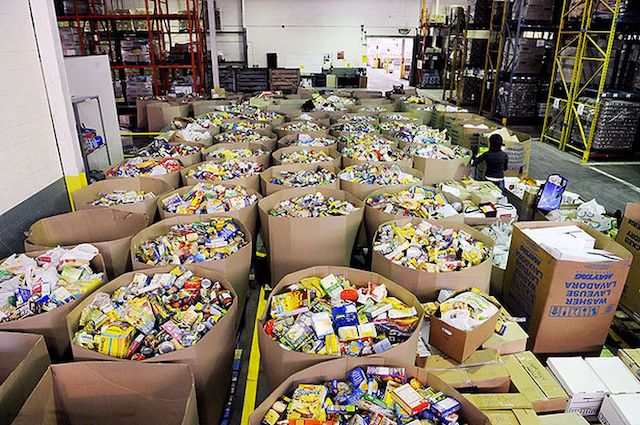A city in crisis: Toronto food banks record highest number of visits ever during pandemic

There were 1.45 million visits to Toronto food banks last year, the highest number of visits ever recorded in Toronto, according to the annual Who's Hungry report released by the Daily Bread Food Bank and North York Harvest.
This represents a 47% increase compared to the previous year and is 1.5 times higher than the previous record set in 2010 at the peak of the 2008 recession.
"The pandemic has made it clear that years of increasing precarious employment, unaffordable housing, and an insufficient social safety net have created a crisis for people living in Toronto," says Neil Hetherington, CEO, Daily Bread Food Bank. "With food bank visits at a record high, it is clear that we need to implement the report recommendations to achieve systemic change."
For the first time, new clients outnumbered existing clients at food banks with a 61% increase compared to the year prior. New clients were more likely to receive income from employment and pandemic benefits such as Employment Insurance (EI) and Canada Recovery Benefit (CRB), while the majority of existing clients (55%) reported social assistance as their primary income source.
"Food bank clients continue to face significant financial challenges as a result of the pandemic," says Ryan Noble, Executive Director, North York Harvest Food Bank. "COVID-19 has demonstrated that we are all connected—as a community, we can only be resilient when those who are the most marginalized no longer face disadvantages. We need to move from a city where people are struggling to survive to one where people can thrive."
Food bank clients are experiencing severe food insecurity and living in a state of deep poverty.
- One in three respondents did not eat for a whole day. For 52% of those respondents, this occurred almost every month.
- Food bank respondents had a median income of $1,106 per month, which is only about half of Toronto's poverty line of $2,060 per month.
- Clients spend a median of 68% of their income on housing, putting them at high risk for becoming homeless.
- After paying rent and utilities, food bank clients had only $9.17 left per person, per day to afford food, transportation, and all other basic needs. If a food bank client takes two TTC trips, traveling to work and returning home, they would be left with only $2.77 at the end of the day.
- Racialized respondents had only $6.67 left per person, per day after paying for rent and utilities, demonstrating the economic inequities faced in these communities.
As the economy re-opens and pandemic restrictions are lifted, those living in low-income continue to remain in a state of crisis.
The 2021 Who's Hungry report is a call to action from a city in crisis and explores ways to build greater resiliency. Daily Bread and North York Harvest urge that immediate action be taken and have outlined concrete recommendations for how each level of government can respond to the worsening hunger crisis through reducing precarious employment, improving income supports, investing in affordable childcare, and rapidly expanding access to affordable housing.
Visit dailybread.ca/whoshungry to read full report.
